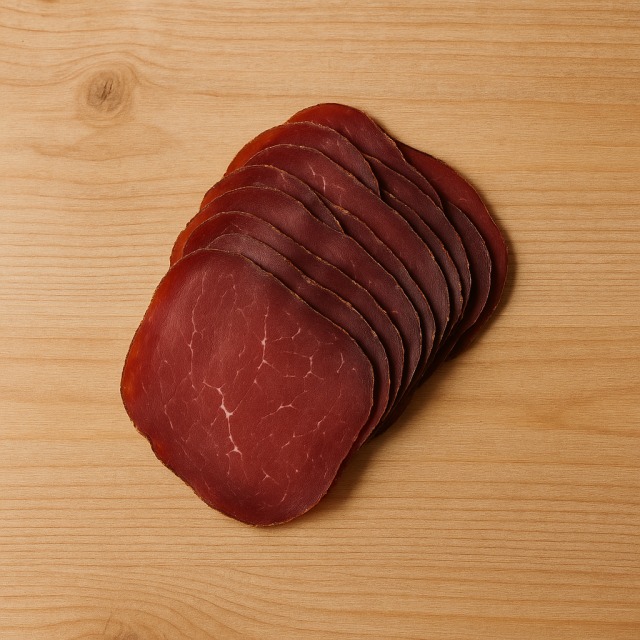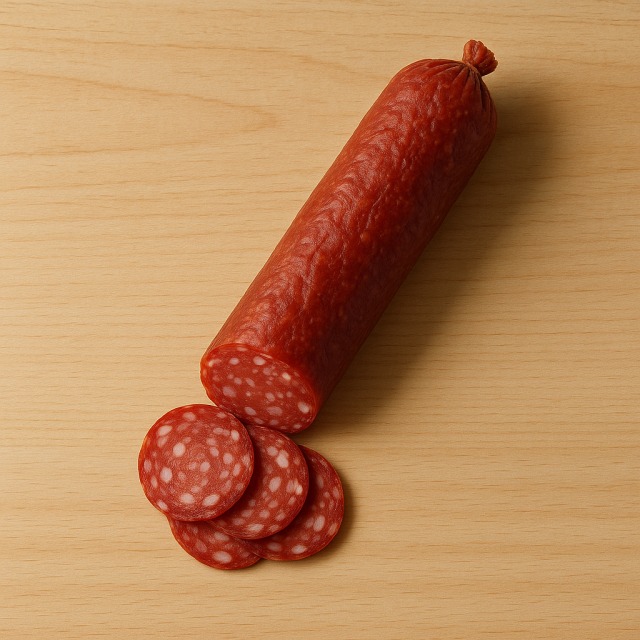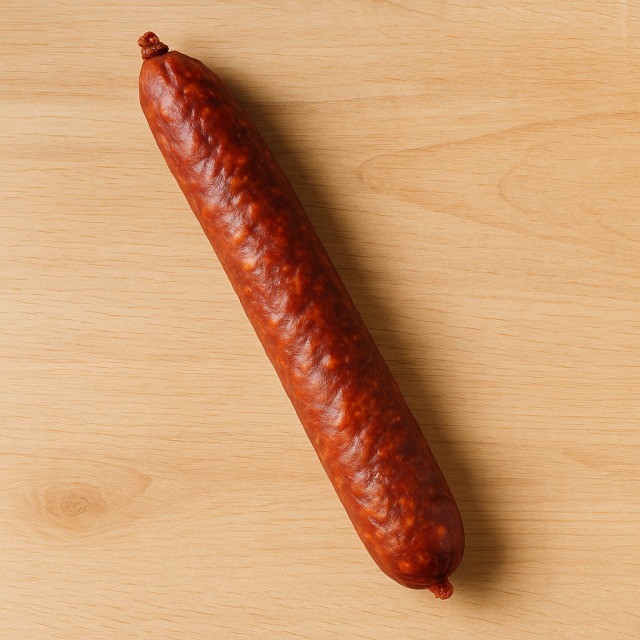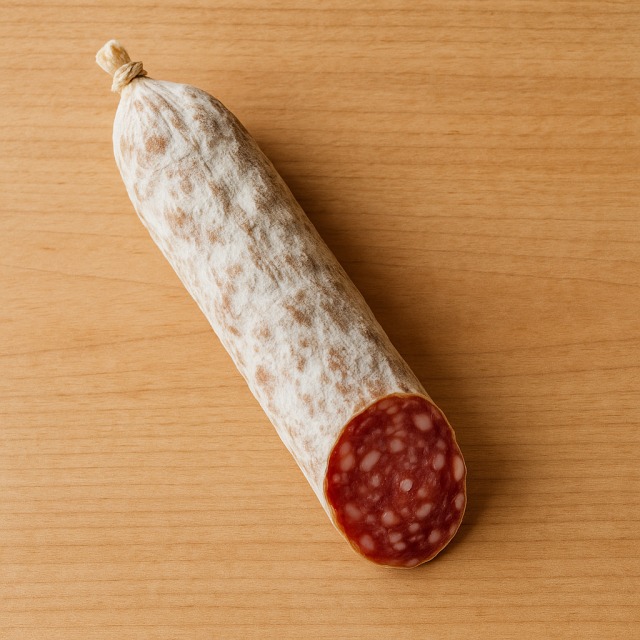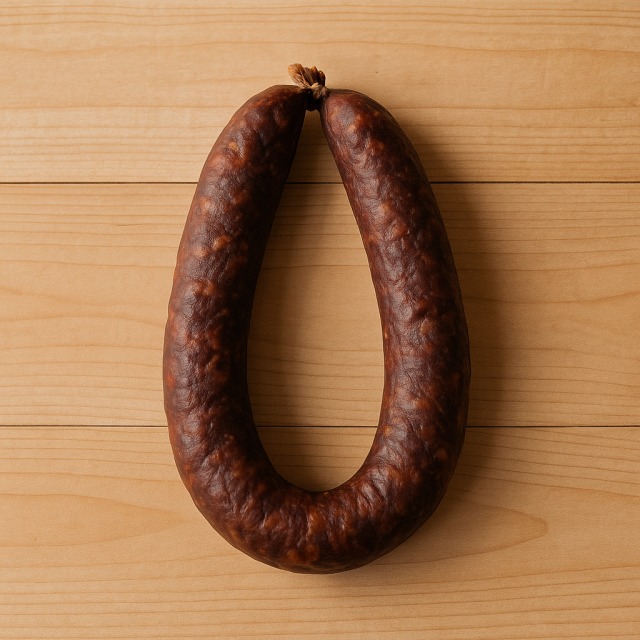Calorie Chart / Meat & Eggs / Cured ham
How Many Calories Are in Cured ham?
Calculation of the nutritional value & Recommended Dietary Intake of cured ham
For g and a calorie requirement of kcal
| Calories 115 kcal | Proteins 12 g | Lipids 7.5 g | Carbohydrates 0.3 g |
| 6% | 16% | 11% | 0% |
Health benefits of cured ham
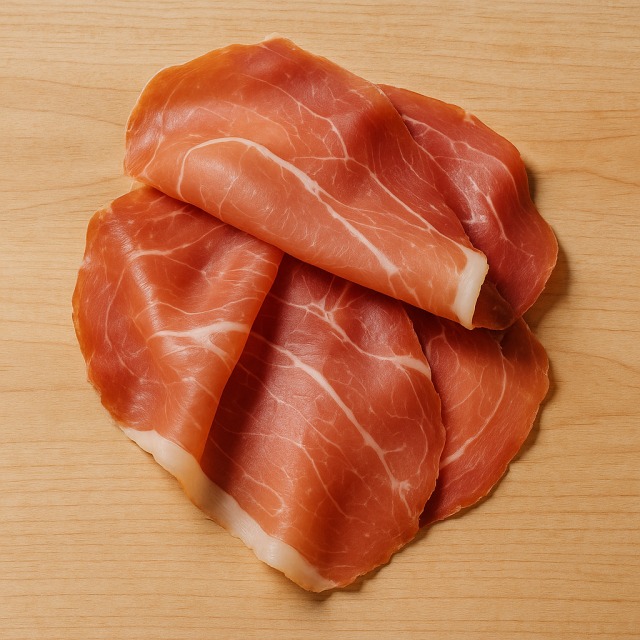
Cured ham - 100g
Calories 229 kcal
Proteins 23 g
Lipids 15 g
Carbohydrates 0.5 g
Cured ham is a moderate-calorie cold cut (229 kcal per 100 g), yet it supplies a remarkable 23 g of proteins for muscle maintenance while keeping carbohydrates almost negligible. Mentioning calories repeatedly is useful here because people searching "cured ham calories" need to know that this food fits into many calorie-controlled plans.
Rich in vitamins of the B-group (especially B1, B3, and B6), cured ham supports normal energy metabolism, which again links back to how your body handles calories. It also delivers minerals such as iron, zinc, phosphorus, and selenium that contribute to immunity and antioxidant defense. Its lipid profile is dominated by oleic acid, the same heart-friendly monounsaturated fat found in olive oil; this helps keep calories satisfying without excessive saturated fat.
Because the meat is dry-cured for months, bioactive peptides with supposed antioxidant properties may develop. Sodium is higher than in fresh meats, so hypertensive individuals should monitor their daily calories and salt together. Fun historical note: in Parma, hams were salted and hung in cool Apennine breezes as early as Roman times—proof that concern about preserving food (and indirectly calories) is nothing new.
To sum up, cured ham is a flavourful, protein-dense, and moderate-calorie option that can enrich many dishes without blowing your calorie budget, provided salt is kept in check.
Tips for incorporating cured ham into a balanced diet
For a balanced plate that keeps calories reasonable, combine thin slices of cured ham with a summer salad of arugula, ripe melon cubes, and a few pearls of mozzarella. This sweet-salty mix feels gourmet while staying light in calories.
At brunch, try a whole-grain tartine: toast of wholemeal bread rubbed with tomato, topped with cured ham, and a soft-boiled egg. The fibers and proteins create longer satiety, so you are less tempted to add hidden calories later in the day.
Need a speedy dinner? Roll a slice of cured ham around steamed asparagus, drizzle with lemon juice, and bake for five minutes. You get colour, crunch, and controlled calories on the same tray.
If you enjoy homemade pizza, add cured ham after baking: heat will be gentle on nutrients and keeps excess calories from extra fat. Whatever the recipe, measure portions (30 g provide roughly 70 calories) and balance the rest of the meal with vegetables to maintain overall calorie goals.
Frequently Asked Questions
- How many calories are in cured ham?
- There are 229 kcal per 100 g.
- Is cured ham a good protein source for athletes watching their calories?
- Yes. With 23 g of proteins and 229 kcal per 100 g, cured ham offers an excellent protein-to-calorie ratio, making it suitable for muscle repair without excessive energy intake.
- How do the calories in cured ham compare with those in cooked ham?
- Cured ham sits at 229 kcal/100 g, whereas cooked ham averages about 145 kcal/100 g. Both can fit into a diet; simply adjust portions so total calories stay aligned with your goals.
- Can I include cured ham in a low-sodium diet while monitoring calories?
- The calories themselves are moderate, but sodium is high. If you must restrict salt, keep cured ham portions small, hydrate well, and complement the meal with fresh produce low in calories and salt.
- Does cooking or heating cured ham change its calorie content?
- Light heating does not significantly alter calories; any minor change comes from moisture loss. Added fats (butter, oil) during cooking, however, can raise total calories quickly.
- What is the best way to store cured ham to preserve flavour and calorie quality?
- Keep the ham in its original vacuum pack or tightly wrapped in the fridge (4 °C). Proper storage prevents drying that could concentrate salt and calories per gram while dulling taste.
Similar foods
Information provided by Calorie Menu may contain inaccuracies or errors. It cannot, under any circumstances, substitute medical advice or medication.
